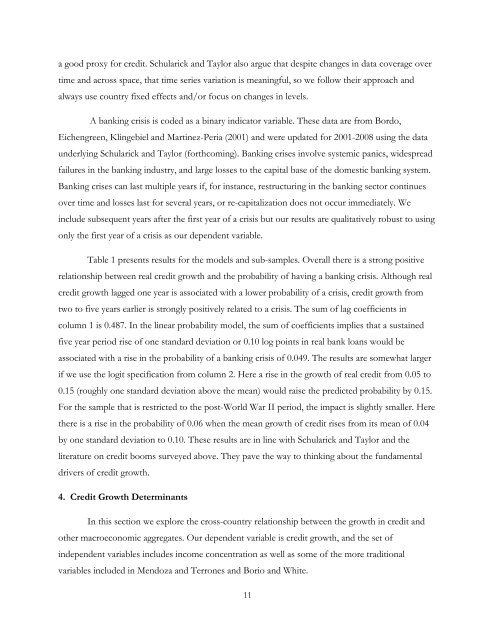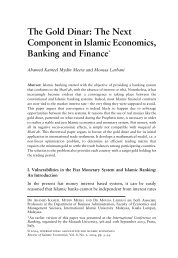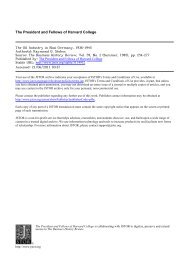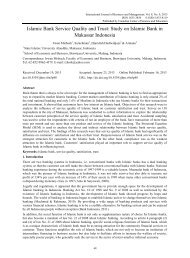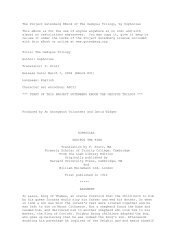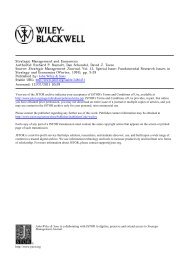Michael D. Bordo Christopher M. Meissner Working Paper 178
Michael D. Bordo Christopher M. Meissner Working Paper 178
Michael D. Bordo Christopher M. Meissner Working Paper 178
You also want an ePaper? Increase the reach of your titles
YUMPU automatically turns print PDFs into web optimized ePapers that Google loves.
a good proxy for credit. Schularick and Taylor also argue that despite changes in data coverage over<br />
time and across space, that time series variation is meaningful, so we follow their approach and<br />
always use country fixed effects and/or focus on changes in levels.<br />
A banking crisis is coded as a binary indicator variable. These data are from <strong>Bordo</strong>,<br />
Eichengreen, Klingebiel and Martinez-Peria (2001) and were updated for 2001-2008 using the data<br />
underlying Schularick and Taylor (forthcoming). Banking crises involve systemic panics, widespread<br />
failures in the banking industry, and large losses to the capital base of the domestic banking system.<br />
Banking crises can last multiple years if, for instance, restructuring in the banking sector continues<br />
over time and losses last for several years, or re-capitalization does not occur immediately. We<br />
include subsequent years after the first year of a crisis but our results are qualitatively robust to using<br />
only the first year of a crisis as our dependent variable.<br />
Table 1 presents results for the models and sub-samples. Overall there is a strong positive<br />
relationship between real credit growth and the probability of having a banking crisis. Although real<br />
credit growth lagged one year is associated with a lower probability of a crisis, credit growth from<br />
two to five years earlier is strongly positively related to a crisis. The sum of lag coefficients in<br />
column 1 is 0.487. In the linear probability model, the sum of coefficients implies that a sustained<br />
five year period rise of one standard deviation or 0.10 log points in real bank loans would be<br />
associated with a rise in the probability of a banking crisis of 0.049. The results are somewhat larger<br />
if we use the logit specification from column 2. Here a rise in the growth of real credit from 0.05 to<br />
0.15 (roughly one standard deviation above the mean) would raise the predicted probability by 0.15.<br />
For the sample that is restricted to the post-World War II period, the impact is slightly smaller. Here<br />
there is a rise in the probability of 0.06 when the mean growth of credit rises from its mean of 0.04<br />
by one standard deviation to 0.10. These results are in line with Schularick and Taylor and the<br />
literature on credit booms surveyed above. They pave the way to thinking about the fundamental<br />
drivers of credit growth.<br />
4. Credit Growth Determinants<br />
In this section we explore the cross-country relationship between the growth in credit and<br />
other macroeconomic aggregates. Our dependent variable is credit growth, and the set of<br />
independent variables includes income concentration as well as some of the more traditional<br />
variables included in Mendoza and Terrones and Borio and White.<br />
11


